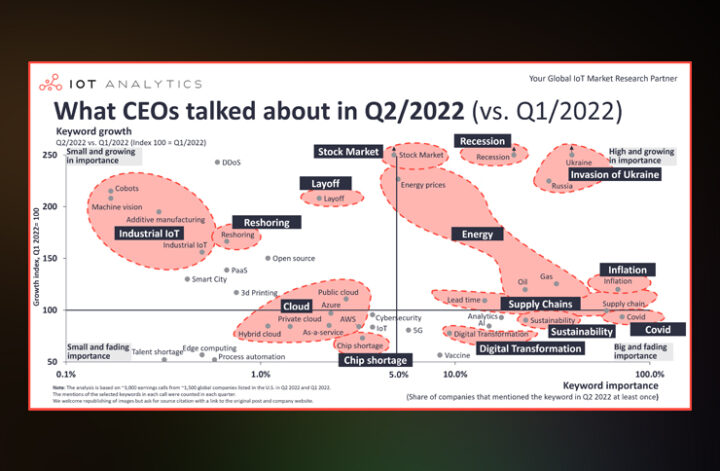Telehealth giant Teladoc (NYSE: TDOC) has recently encountered challenges on its financial journey, with some attributing these hurdles to the marketing expenses associated with customer acquisition for its digital mental health subsidiary, BetterHelp. Despite these marketing headwinds, BetterHelp managed to achieve a commendable 40% year-over-year revenue growth during the second quarter of 2022. However, this performance, while strong, landed at the lower end of Teladoc’s initial expectations.
Jason Gorevic, CEO of Teladoc, shed light on this situation during a recent earnings call. He suggested that this could potentially be an indicator of consumers becoming more cautious with their spending habits, primarily due to the rising inflation, which has recently reached multi-decade highs. This drop in consumer confidence appears to have had a knock-on effect on Teladoc’s financial performance.
In the financial report for the second quarter, Teladoc reported revenues of $592.38 million, marking a 17.7% year-over-year increase. Interestingly, Teladoc exceeded its Q2 earnings per share projections by $0.15 and its earnings by $5.12 million. Despite these positive numbers, Gorevic issued a word of caution, stating that the overall financial performance in the second half of 2022 is more likely to trend toward the lower end of the consolidated revenue and adjusted EBITDA (Earnings Before Interest, Taxes, Depreciation, and Amortization) guidance.
This article explores the recent challenges faced by Teladoc, the performance of BetterHelp, the factors affecting Teladoc’s financial projections, and the dynamics within the digital mental health landscape.
BetterHelp’s Growth Amid Marketing Challenges
BetterHelp, a subsidiary of Teladoc specializing in digital mental health services, managed to achieve impressive year-over-year revenue growth of 40% during the second quarter of 2022. While such growth is undoubtedly notable, it is worth noting that this performance landed at the lower end of Teladoc’s expectations. This outcome has raised questions about the broader financial landscape and consumer sentiment.
Gorevic’s mention of consumer confidence dipping to multi-decade lows in conjunction with rising inflation suggests that individuals may be tightening their belts and becoming more discerning about their spending. In such an economic climate, consumers may be more selective about their healthcare choices, including digital mental health services like BetterHelp.
Despite these challenges, BetterHelp continues to be a significant contributor to Teladoc’s revenue stream. BetterHelp’s revenue accounts for approximately one-third of Teladoc’s total revenues. Management at Teladoc acknowledges that lower yields on advertising spend for BetterHelp have been a major factor in the company’s reduced financial guidance. However, Teladoc still maintains optimism about BetterHelp’s growth potential, anticipating a 35-40% growth rate for this business in fiscal year 2022.
Teladoc’s Financial Performance
Teladoc’s financial results for the second quarter of 2022 displayed growth in revenues, with a 17.7% year-over-year increase, surpassing $592 million. While these numbers exceeded the company’s Q2 earnings per share projections and earnings, Gorevic’s cautious tone during the earnings call suggests that there are factors affecting the company’s performance that warrant attention.
One of the key factors impacting Teladoc’s year-end earnings projections is the slower-than-anticipated dealmaking pace within its chronic care business. This slower rate of dealmaking has influenced the company’s financial outlook, leading to more conservative estimates for the latter part of 2022.
In addition to the dealmaking pace, Teladoc has pointed to challenges with advertising yield rates for two consecutive earnings calls. The company has attributed its underwhelming advertising yield rate to smaller digital health startups that employ what Teladoc views as low or no-return customer acquisition strategies. These startups have been pursuing aggressive tactics to gain market share, often involving substantial advertising spend.
Gorevic expressed his concerns about this situation, emphasizing that while Teladoc does not consider these strategies sustainable, it is challenging to predict how long this dynamic may persist.
Competitive Landscape in Digital Behavioral Health
The competitive landscape in the digital behavioral health sector is dynamic and filled with a variety of players, both large and small. Despite the challenges faced by Teladoc and BetterHelp, there are promising trends within the market.
One noteworthy development is BetterHelp’s ability to regain market share in recent months. This resurgence in market share has coincided with a decline in website traffic for Cerebral, a digital mental health startup. It’s essential to note that the behavioral health sector’s overall website traffic has remained relatively flat over the past year, despite fluctuations in individual companies’ performance.
Future Prospects and Strategic Adjustments
In response to the challenges related to advertising yield rates, Teladoc has decided to scale back its advertising spend. While the company will not completely eliminate advertising spend in the fourth quarter, significant reductions are planned. These reductions are a direct result of the higher expenditure per advertising impact, which has made advertising less cost-effective.
Teladoc’s management is still optimistic about BetterHelp’s potential to drive growth and contribute significantly to the company’s overall success. The digital mental health landscape remains a dynamic and evolving space, with ongoing opportunities for Teladoc to navigate challenges effectively.
Despite the competitive pressures and challenges related to marketing and consumer sentiment, Teladoc’s scale and position in the direct-to-consumer (D2C) market provide a foundation for resilience. The company’s leadership believes that its advantages in terms of scale will allow it to outperform the market and maintain strong financial performance, even in challenging economic conditions.
The challenges faced by Teladoc, particularly in its marketing efforts and consumer sentiment, have highlighted the complex and ever-evolving nature of the digital mental health landscape. BetterHelp’s growth, while strong, has raised questions about the broader financial landscape and the impact of consumer confidence.
Teladoc’s financial results have shown growth, but caution is in the air, as the company adjusts its financial projections for the latter part of 2022. The dynamics within the digital behavioral health sector, including competition and marketing strategies, continue to influence Teladoc’s performance.
In this landscape, Teladoc’s strategic adjustments, such as reducing advertising spend and focusing on its strengths, demonstrate its adaptability and resilience. As Teladoc continues to navigate the challenges and opportunities within the digital mental health sector, the future remains uncertain, but the company’s determination and strategic vision will be critical factors in its success.




